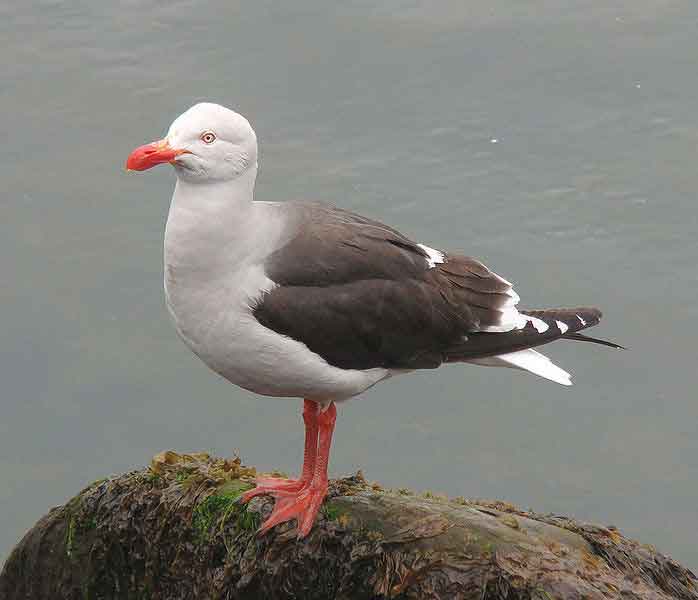Leucophaeus scoresbii (*) Cladus: Eukaryota Name Larus scoresbii Traill, 1823 Vernacular name The Dolphin Gull (Leucophaeus scoresbii), sometimes erroneously called the Red-billed Gull (a somewhat similar but unrelated species from New Zealand), is a gull native to southern Chile and Argentina, and the Falkland Islands. It is a coastal bird inhabiting rocky, muddy and sandy shores and is often found around seabird colonies. They have grayish feathers, and the feathers on their wings are a darker shade. They lay 2 to 3 eggs in December. Dolphin Gulls eat many things from mussels to carrion. The scientific name commemorates the English explorer William Scoresby. * BirdLife International (2004). Larus scoresbii. 2006. IUCN Red List of Threatened Species. IUCN 2006. www.iucnredlist.org. Retrieved on 10 February 2007. Database entry includes justification for why this species is of least concern Source: Wikispecies: All text is available under the terms of the GNU Free Documentation License |
|
|||

